
A Blackhawk helicopter lifts off from Joint Base Elmendorf-Richardson in Anchorage. It tilts towards the Chugach mountains, flying low over forests and farmlands, alongside rocky peaks and silty valleys.
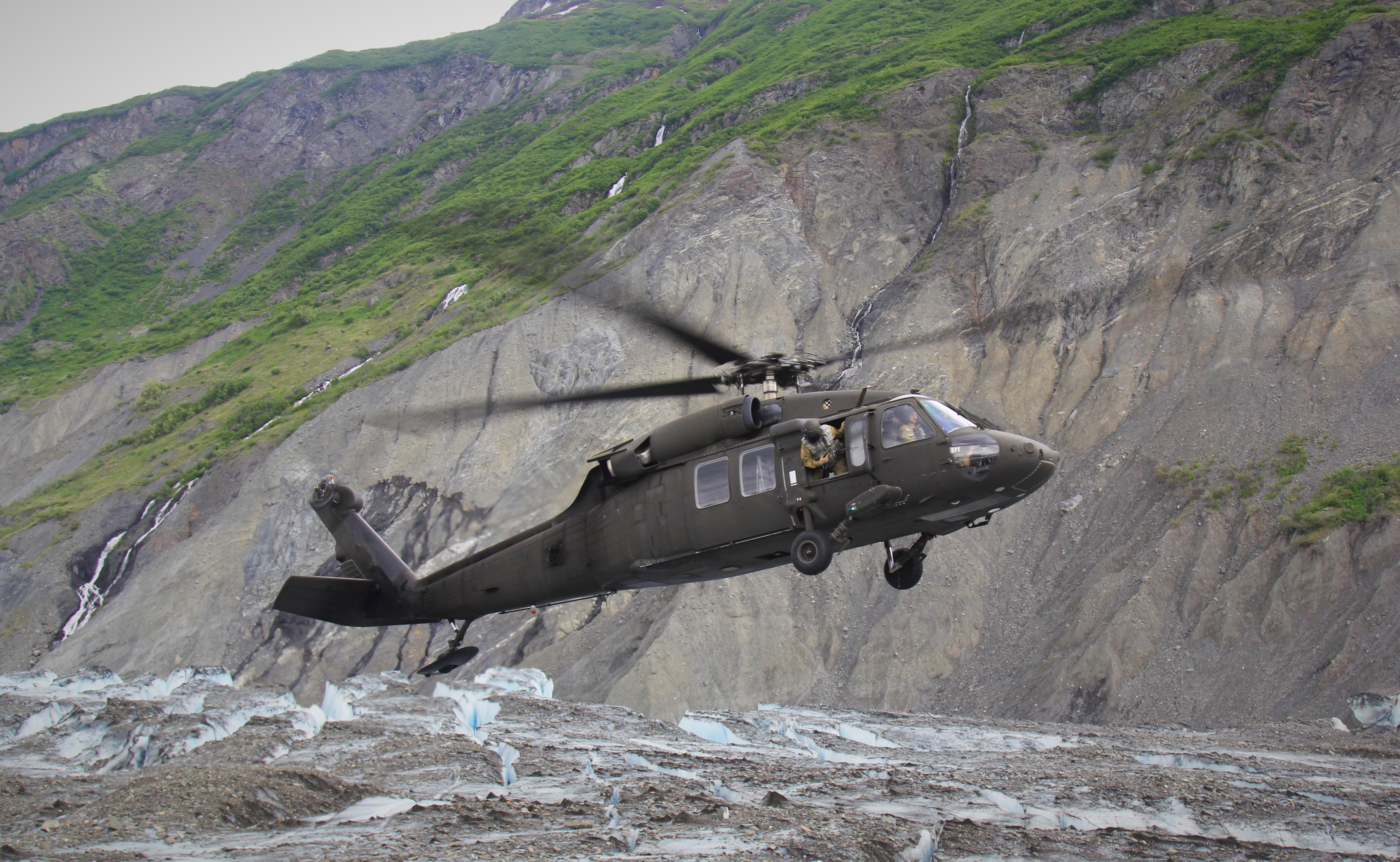
A half hour later, Colony Glacier comes into sight. The UH-60 Black Hawk lands on a flat patch of ice and Captain Victoria Martinez ducks under its roaring rotors. She straps spikey crampons to her boots. She’s geared up with a wool hat, a neck warmer and gloves.
“I probably have four layers on,” Capt. Martinez says, with a laugh.
Capt. Martinez is from the Air Force Mortuary Affairs, an operation responsible for the return of fallen service members. Out here on Colony Glacier, she’s leading the effort to recover remains and personal effects left after the crash.
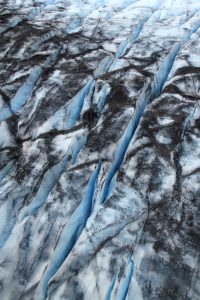
“We get on our hands and knees,” Capt. Martinez explains. “We have a trowel and we are flipping over all of these rocks. We’re looking for the smallest pieces of tissue or bone. So this is what we do every day for a month, six days a week.”
In 1952, an Air Force plane collided with the side of a mountain north of Anchorage. All 52 service members aboard perished. In the days after the crash, a storm buried the wreckage.
It wasn’t until 2012 that the remains were rediscovered on Colony Glacier. A crew has assembled every June since then to bring closure to the families of the service members who lost their lives.
It’s still cold out on the glacier, but June is the safest time to work. In May, there’s still a chance of snow and by July, Capt. Martinez explains, it’s warm enough that the ice can crack and shift.
Right now, that powder blue ice is covered in a thin layer of gravel– little pebbles, larger rocks. A few of those rocks are painted orange, telling the crew which areas to search.
Capt. Martinez walks carefully around debris.
“This is a piece of a shirt– a blues uniform,” Capt. Martinez points out. “You can kind of see the collar where the button would go.”
It’s all just lying on top of the ice despite decades of winter weather and summer melt.
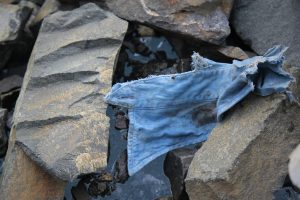
Capt. Martinez’s team has found playing cards, nail clippers, a pack of cigarettes — you can still make out the camel on the side of the pack. There’s a camera completely intact and a light bulb that’s gone unbroken for more than 60 years.
These were things service members packed away in their luggage or tucked into their shirt pockets to keep safe.
Klay Allen is a U.S. Army medic and remembers looking down and seeing something shiny on the glacier’s surface.
“I picked it up, looked at it, and it turned out it was a wedding ring,” Allen says. “It was a pretty amazing find [considering] how big this area is– to find something was pretty neat.”
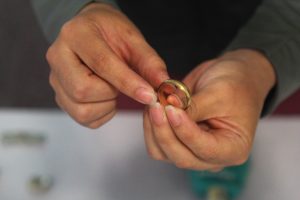
The crew found two more wedding rings just this June. If they can be identified, the rings will be returned to the service members’ families.
As for any human remains, those will be flown to Dover Air Force Base in Delaware.
“Their loved ones died in service to this great nation,” says Colonel Dawn Lancaster. “It’s the least we can do.”
Col. Lancaster is commander of the Air Force Mortuary Affairs based in Dover, DE. So far, 38 of the 52 people on board in 1952 flight have been identified.
“I would love to know someday that we’re going to be able to identify all 52 members. Is it possible? Yes, but I know it may not happen,” Lancaster admits.
But if she can get 50, “that’s 50 families I’ve taken care of and they have some form of closure and know that we kept our promise to them.”
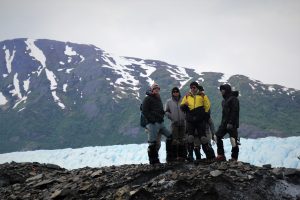
That promise to fallen soldiers includes an escort, a dignified arrival and burial with full honors.
Cpt. Victoria Martinez has personally escorted the remains of two service members that went down in this crash. She says it’s an emotional experience for everyone.
“They relive those moments 60-plus years later, so they’re grieving,” Capt. Martinez explains. “But at the same time we’re giving them closure.”
Martinez and her crew will keep searching, sifting through ice and gravel on this hallowed ground — in the hopes of bringing more of these men home.
Emily Russell is the voice of Alaska morning news as Alaska Public Media’s Morning News Host and Producer.
Originally from the Adirondacks in upstate New York, Emily moved to Alaska in 2012. She skied her way through three winters in Fairbanks, earning her Master’s degree in Northern Studies from UAF.
Emily’s career in radio started in Nome in 2015, reporting for KNOM on everything from subsistence whale harvests to housing shortages in Native villages. She then worked for KCAW in Sitka, finally seeing what all the fuss with Southeast, Alaska was all about.
Back on the road system, Emily is looking forward to driving her Subaru around the region to hike, hunt, fish and pick as many berries as possible. When she’s not talking into the mic in the morning, Emily can be found reporting from the peaks above Anchorage to the rivers around Southcentral.




